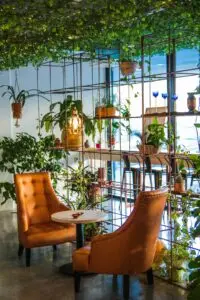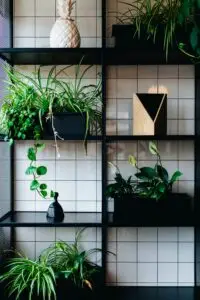Amazing Indoor Plants for Your Living Space

Amazing In door Plants for Your Living Space
Indoor plants have developed as a major component of contemporary interior design due to their vibrant and fresh appearance. In addition to being visually appealing, these green pals improve mental health, promote harmony, and improve air quality. There is a plant for every indoor gardener, regardless of skill level. YouTube is filled with video content on Indoor Plants. But if you liked our content & news you can visit our site: Novel Stuff

Why Choose In door Plants?
Indoor plants offer a number of advantages beyond just aesthetics. By removing contaminants from the air, they improve the quality of indoor air. Numerous studies have demonstrated that being surrounded by greenery elevates mood and reduces stress. Indoor plants are also great for home offices because they can boost creativity and productivity.

Top 10 In door Plants for Every Home
Sansevieria, another name for snake plant, is perfect for beginners. It is a low-maintenance option because it can endure infrequent watering and low light conditions. Pothos, or Epipremnum aureum, is a hardy, fast-growing plant that thrives in a variety of lighting conditions. The delicate white blossoms of the peace lily require regular watering and low light. Spider plants, also known as Chlorophytum comosum, are an ideal choice for pet-friendly hanging baskets. Monstera Deliciosa, recognized for its very holey leaves, thrives in bright, indirect light.
Zamioculcas zamiifolia, commonly referred to as ZZ Plant, is essentially unbreakable and does well in low light conditions. The rubber plant, also called Ficus elastica, likes strong, filtered light and has striking, dramatic foliage. Aloe Vera needs little water and can also be used as a natural burn cure. Calathea needs low light and high humidity and is known for its unique leaf patterns. Succulents need very little watering and do well on sunny windowsills.
How to Care for In door Plants
Although caring for indoor plants may seem difficult, you may quickly become an expert with a few pointers. The majority of plants prefer strong, indirect light, so pick your position wisely. Since overwatering is the most frequent error, water them sparingly. Before watering again, make sure the dirt is completely dry. During the growing season, fertilize your plants once a month with a balanced liquid fertilizer. To maintain effective photosynthetic activity, lightly dust the leaves with a moist cloth. To promote healthy development, repotte your plants every one to two years.
Green Living with In door Plants
One step toward eco-friendly and sustainable living is including indoor plants into your daily routine. Grow herbs or leafy greens on a wall by creating a vertical garden to conserve space. Make use of repurposed pots by turning old containers or jars into planters. Turn dead leaves into nutrient-rich compost for your garden by composting plant debris.
FAQs about Indoor Plants
1. Which indoor plant is easiest to care for?
The Snake Plant is one of the easiest indoor plants to maintain. It requires minimal watering and can survive in low light.
How often should I water my indoor plants?
This depends on the plant. As a general rule, water when the top one to two inches of soil feels dry.
Can indoor plants survive without sunlight?
While no plant can survive without light entirely, low-light plants like ZZ Plants and Snake Plants can thrive in shaded areas with minimal natural light.
Do indoor plants improve air quality?
Yes, plants like Peace Lilies and Spider Plants are known for their air-purifying qualities.
How do I prevent pests on indoor plants?
Keep leaves clean, inspect plants regularly, and use natural pest repellents like neem oil if needed.
What are some pet-friendly indoor plants?
Spider Plants, Areca Palms, and Calatheas are safe choices for homes with pets.
Final Thoughts
In door plants are a simple yet efficient way to transform your living space into a refuge of productivity and peace. There is no reason not to appreciate the beauty of flora when there are numerous ways to suit every household circumstance and ability level. Enjoy the process of building your own home garden by starting small and experimenting. Both your health and your plants will benefit from it!

